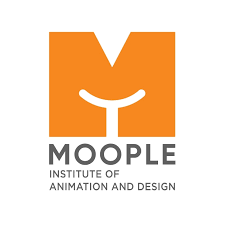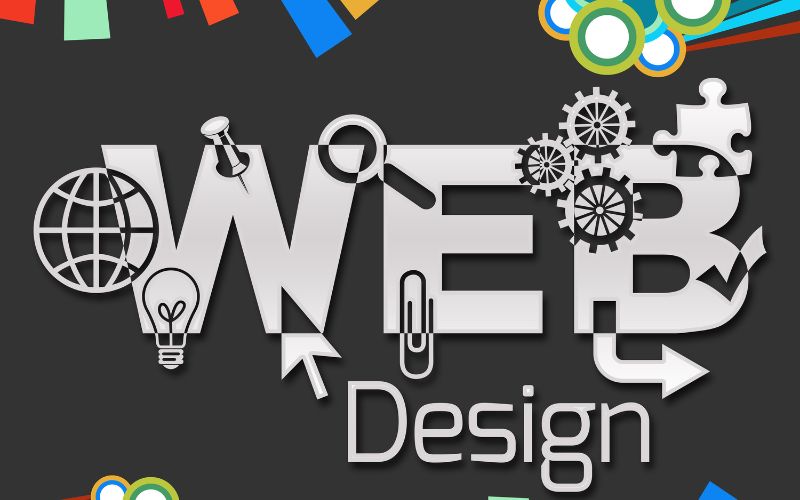Picture going to a website that appears alive. You click to open menus that dance. Some graphics slide into view, and buttons shimmer as you hover. That’s the pleasure of animation and movement in web design! Adding animation for students wanting to design websites is like sprinkling magic dust to make the pages interesting and simple to use.
Motion design is a game-changer in 2025 when 60% of internet users desire interactive experiences. Using simple language, this blog shows how to incorporate animation into your web designs and inspire your love of creativity. Let’s explore this vibrant world of moving web magic!
What Are Animation and Motion in Web Design?
In web design, motion and animation add moving parts to a website. It means animations in web design. Think of buttons that bounce or photographs that fade in. Motion design employs these animations to engage users, tell stories, or brighten pages. It affects how consumers engage with a website, not only as ornamentation.
Because a significant percentage of users remain longer on animated websites, motion is essential to getting noticed. Creating a website to dance to a happy tune is like that.
Why Integrate Animation into Web Design?
Animations help websites stand out in a packed online environment. They transform straightforward pages into enthralling adventures. They are important for the following reasons:
Grabs Attention
- Moving elements are quickly grabbing notice.
- Users identify crucial buttons or discounts.
- Keeps visitors intrigued and wandering.
Guide Users
- Animations guide users on where to click and scroll.
- Clearly highlights forms or menus.
- Makes navigation seem natural.
Increases Pleasure
- Animations boost fun on websites through small modifications.
- Users are pleased. It’s as though they’re watching a brief cartoon.
- Inspires them to return.
Tells Stories
- Animations show how products work or brands shine.
- Develops emotional relationships with consumers.
- Transforms visits into unique events.
Animations invite users to hang around and play with a friendly wave.
Different Types of Animations for Web Design
Many methods exist to give websites motion. Every type has a specific function. Here are the best ones:
Micro-Animations
- Tiny effects like a button glowing on hover are micro-animations.
- Gives gloss without exhausting consumers.
- Utilised by 65% of the most popular websites in 2024.
Transitions
- There are transitions like pages disappearing in or out.
- Helps to navigate smoothly.
- Lowers abrupt page leaps.
Scroll Animations
- Elements show as people scroll down.
- Surprises keep people engaged.
- Increases website time by 20%.
Loading Animations
- Spinners or bars indicate that a page is loading.
- Keeps users patient through waits.
- Enhancement of user happiness.
Background Animations
- Shapes or videos moving in the background.
- Sets a mood, like a calm wave or a starry night.
- Gives brands a distinctive vibe.
Each of these animations paints a distinct effect, like various brushes.
How to Add Animation to Your Website Designs
Motion addition is simpler than you would think! Start with the following steps:
Design Your Objectives
- Like directing consumers, determine why animation is required.
- Avoid adding motion solely for visual appeal.
- Concentrate on improving the user experience.
Use CSS for Basic Effects
- CSS generates fades, slides, or hovers.
- Quick and light for browsers.
- Ideal for transitions or micro-animations.
Invest in JavaScript Libraries
- GSAP and other tools give complicated animations.
- It’s simple to control motion pathways and timing.
- Perfect for scrolls or background effects.
Remain Subtle
- To avoid clutter, utilise little, seamless animations.
- Too much motion might irritate people.
- Check friend reactions for feedback.
Set for Speed
- Quick loading requires compressed animation files.
- 53% of users go from sluggish websites.
- For lightweight motion, employ tools like Lottie.
These actions are similar to planting a garden: organise, care, and wait for it to blossom.
Top Web Animation Recommendations
Following these guidelines will help animations sparkle:
Match the Brand
- Choose styles and hues that match the design of the website.
- Playful bounces are possible for a fun brand.
- A serious site calls for quiet fades.
Time it Correctly
- Keep animations modest under .5 seconds.
- Slow effects irritate consumers.
- Timing tests for a realistic impression.
Support Accessibility
- Enable accessibility for delicate users by adding motion-reducing options.
- Dizziness causes many people to like fewer animations.
- Employ CSS media queries for regulation.
Testing on Gadgets
- Look at computer and phone animations.
- Make sure they function on either Chrome or Safari.
- Mobile users constitute over 60% of traffic.
Balance with Content
- Animations should not conceal buttons or text.
- Concentrate on the message of the website.
- Support rather than divert by motion.
These customs resemble making a dinner; combine tastes with care for pleasure.
Tools to Generate Web Animations
To animate, you do not have to be a specialist! These tools enable enjoyment:
Adobe After Effects
- Generates complex animations to be exported.
- Ideal for background movement or loading.
- 40% of motion designers employ it.
Figma
- Creates button or transition animations.
- Beginners can quickly create a prototype.
- Open to students with a school email.
Lottie on Airbnb
- JSON files let you add little animations.
- Works with After Effects exports.
- Keeps sites quick and simple.
GSAP (GreenSock)
- Precise animation library in JavaScript from GreenSock.
- Handles scrolls or sophisticated effects.
- Developers love it for control.
CSS Animations
- Simple effects are coded into web design.
- There are no extra tools needed.
- Quick to learn with tutorials.
Like an artist’s kit, these instruments are ready to fire your imagination.
Challenges and Methods for Overcoming Them
Animations can be difficult; still, you can manage them! Here’s how:
Slow Loading
- Challenge: Big animations cause lag in websites.
- Solution: Test with Google Lighthouse using either Lottie or file compression.
Learning Curve
- Challenge: GSAP feels tough.
- Solution: Beginning with CSS tutorials is the solution. First, practise minor changes.
Overwhelm Users
- Challenge: Too many animations mislead.
- Solution: Set a cap of two to three effects per page. Get feedback from users.
Device Issues
- Challenge: Animations break on vintage phones.
- Solution: Test budgetary appliances. Use basic CSS fallbacks.
These solutions act as a guide, helping you in every step.
Why Animations are Important for Students
With 1.5 million developers in 2025, India’s web design sector is booming. Animations are in demand as 75% of customers desire interactive websites. Students can develop websites for companies worldwide, stores, or schools.
Free programmes like CodePen and YouTube tutorials make learning simple. Animation skills open doors to jobs or freelancing. It resembles finding a gold road toward a creative profession!
Reasons to Study Animation
An animation course is a gateway to a world of fantasy. Using tools like Adobe Animate, Maya, and After Effects, you will be able to produce 2D cartoons, 3D models, and web motion. Web and graphic design courses provide you with experience via hands-on projects like producing a short film or game animation. They show you how to design characters, construct settings, and create effects that grab viewers.
To make your work stand out, you will explore narrative, timing, and motion concepts. Expert educators lead you; job placement assistance links you with studios or web companies. An animation course equips you for positions in games, movies, or website design as the animation sector grows 5% per year. It’s like setting a seed for a bright and creative future.
Upcoming Animation Trends in Web Design
In 2025 and beyond, animations will impress! Here’s what’s coming:
AI-Powered Motion
- AI advises animation techniques for buttons or scrollbars.
- Saves 30% of design time.
- Customises effects for users.
Web Animations in 3D
- With WebGL, 3D models move in browsers.
- Produces VR-like experiences.
- Demand rises 25% annually.
Voice-Triggered Effects
- Animations react to voice instructions.
- Improves enjoyment and accessibility.
- By 2026, voice will be used in half of searches.
Eco-Friendly Motion
- Lightweight animations help to conserve energy.
- Green concepts create user trust.
- Upward trending and sustained locations.
These patterns make animation a necessary skill for the future.
Why Pursue Animation by Joining Moople Academy?
At Moople Academy, we provide a realistic way to perfect animation. Using tools such as Adobe Animate, Maya, and Blender, the courses cover 2D animation, 3D modelling, and motion graphics.
By joining our motion graphics course, you will develop the skills to produce eye-catching cartoons, game assets, or web animations. Designing a website loader or a 3D character is a hands-on initiative that helps you create your portfolio. Expert teachers carefully guide you so that difficult concepts become easy.
Our job placement opportunities from Moople help match you with top studios or technological companies. With adaptable schedules, classes are interactive and suited for both graduate and undergraduate students. Moople will help you develop skills so you may shine in the international animation scene. It’s like having a reliable facilitator pointing out your artistic visions!
Conclusion
Animation and movement convert website layouts into happy experiences. They catch interest, lead users, and provoke pleasure. These abilities are gold because 60% of users love interactive sites. To fly high, begin with fundamental CSS, experiment with programs like Lottie.
Enrol in an animation course at Moople Academy. To build websites that shimmer and dance, sign up for a web development full course right now! Now is the time to start your artistic journey!
FAQs
Q1: Does adding animations to websites require knowledge of code?
Not necessarily! For basic effects, you can start with tools like Figma. CSS animations call for simple coding, but tutorials make it simple. Courses for beginners present step-by-step coding instruction.
Q2: Can low-end phone animations function?
Yes! Use CSS or lightweight tools such as Lottie. Test effects on budget phones. Optimise files to keep animations smooth for all users.
Q3: How long does web animation learning take?
With practice, basic animations take 10–20 learning hours to master. Figma or CSS are quick to start. A few months are required for sophisticated effects like GSAP. The 2D animation course is 18 months, and the 3D animation takes 19 months. A degree course like a B.Sc. in animation will take four years to complete.
Q4: Are animation skills beneficial for employment prospects in India?
Certainly! Indian companies like Zomato need interactive websites. Web design and gaming animation employment are expanding. An impressive portfolio, including motion projects, can captivate employers.

